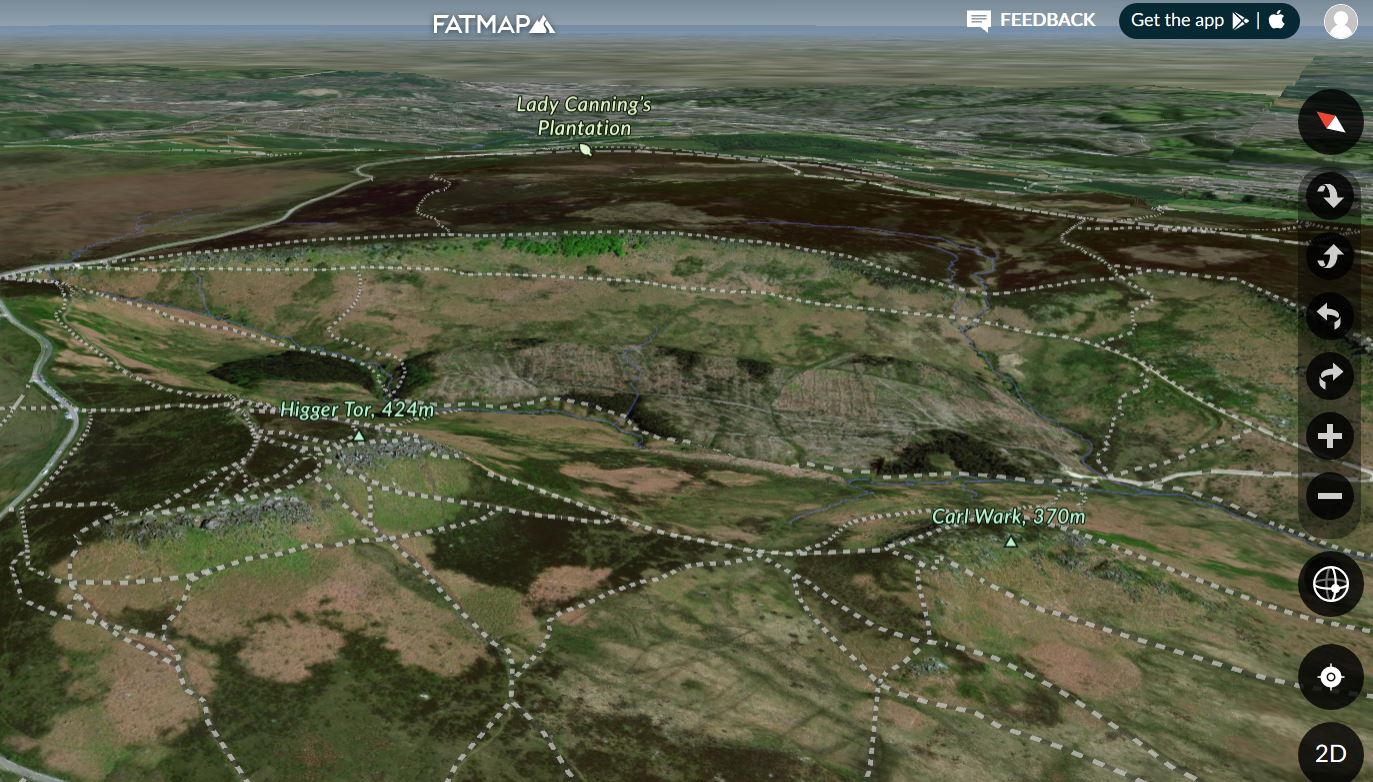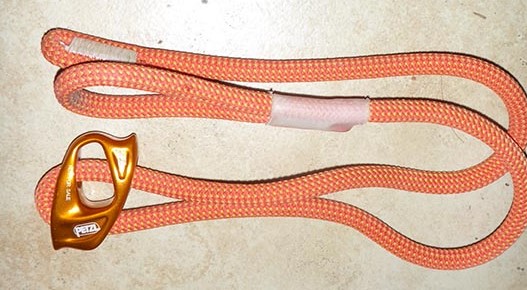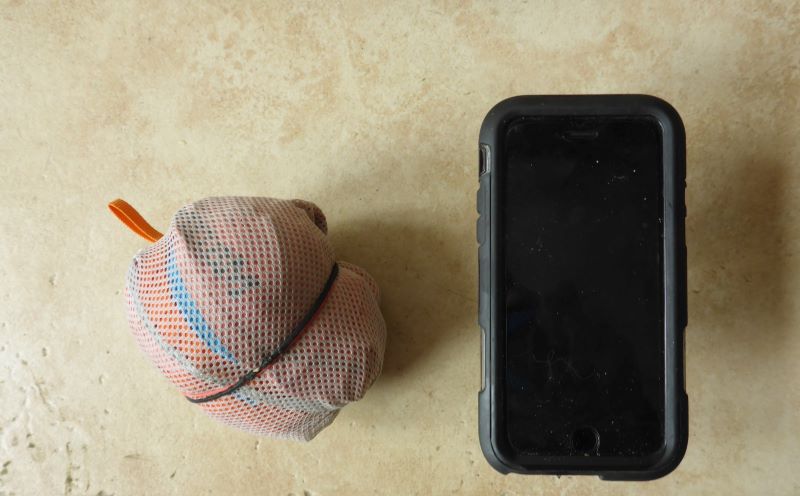Normally at this time of year the big Outdoor Shows would be going off. All the best new kit would be on show and we’d all get excited. But not this year. To make up for it, here is my top 10.
New inventions, new ideas, new shapes, new colours; for the gear freak the Outdoor Show is often the highlight of the year. But to be fair, the kit we have right now is completely amazing, and I’m constantly amazed at how well it works, some of it being a complete game changer.
To make up for the Outdoor Show, here is my personal list of my top 10 bits of outdoor kit that I’m using right now that bring a smile to my face.
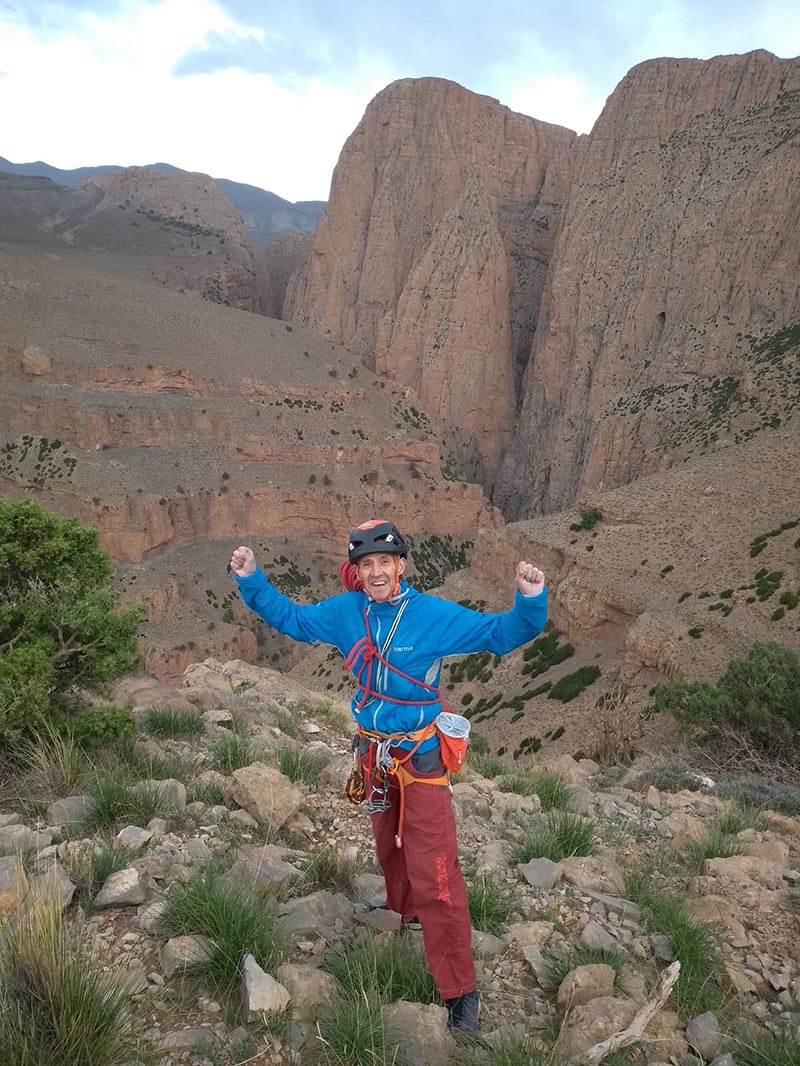
1/ Petzl Sirocco
Climbing helmets have been around for a long time. But way back they were ridiculously heavy and uncomfortable. Not surprisingly, climbers began to ditch the lid as the perceived dangers apparently dropped with more outcrop climbing and less loose rock, and the heavy lump on our head clearly hindered performance. But the danger of an exposed head is always an issue! We took a calculated risk balancing comfort and performance over the chance of a head injury. But wow, how helmets have changed! The Petzl first Sirocco, or orange one, was a revelation, but was really the wrong colour, but now we have helmets from a number of brands that are brilliant, offering comfort and protection while barely even noticing you are wearing it! Even at sport cliffs the helmet is now a common sight, and becoming to norm. Years ago cycle helmets were not that common, now they are absolutely as essential as having a pair of wheels, and worn without thinking. I’d imagine this will become the way for many rock climbing situations too. I look back on many of my ‘adventures’ and cringe at how exposed I was! When I’m traditional climbing now, the lid just goes on alongside the harness without a second thought, and I don’t even notice its there!
https://www.petzl.com/INT/en/Sport/Helmets/SIROCCO
2/ Hard Bar
Not really an outdoor bit of kit, but should be always located in the lid of the rucksack. Now I’m not really an expert in nutrition, more of a total punter really. And in terms of energy/snack bar I’m absolutely happy with a Snickers, Crunchie, Brunch bar, flapjack or Jamie Dodger. When everyone was chewing on their Powerbars back in the 80’s I really didn’t get it! Hardbars seemed to appear recently and have gained a bit of a cult following. Having fluked a few on the cheap I compared them to a 4 pack of Boost bars for 99p from Poundland. Reluctantly I was forced to admit that they were actually pretty tasty even though I love chocolate, but more importantly they actually did provide steady and quality energy that seemed to make a difference. Anyone who knows their stuff will be able to tell you exactly why they are good, but all I can say is that for a bar, they are a winner! When I’m out climbing or cycling I will choose them over a lump of chocolate, and for me to say that is really something! (though I won’t choose them for an evening treat!)
It’s also worth noting that as a brand they are super environmentally friendly, which the makers of my 23p flapjacks probably aren’t!
3/ 5.10 Crawe
Over the years I’ve worn various types and styles of shoe, but I’m constantly learning about the right tools for the job, and how having the best tools can make all the difference.
The new 5.10 Crawe has been a total eye-opener into how having the right tools can make the job easier! I have been really impressed by these, and wrote a review a month or so back.
Cutting to the chase, there are problems I can do in these that are just so much easier than in any other shoe I’ve worn. These are the first shoes I’ve found that seem to perform really well across a large range of terrain, from super steep heel and toe stuff, to intense vertical edging. I’ve been blown away by their performance on very steep rock, with exceptional heel and toe use. There is rubber (stealth HF on heel) everywhere needed and at the correct thickness so as not to feel clunky but eliminate any pain. Despite the heel not being aggressive, I’ve had no heel-slip at all. The shoes are not really down-turned and climb in a ‘flat’ way, pushing onto holds as opposed to clawing onto them. For the majority of our climbing this exactly what we need, and this is where I think the Crawe really scores, in that unlike other modern designs, it excels on both the steep stuff and also the vertical walls with tiny edges. They are not super stiff, so allow plenty of feel and some moulding onto polished nubins (think Peak limestone!), but are stiff enough to stand on edges a while before your feet get tired. They are the ideal tool for bouldering and sport routes. Perhaps not quite perfect for long trad onsights. And not the right shoe for long days out on easy terrain.
http://steve-mcclure.com/articles/152-5-10-crawe-the-perfect-sport-climbing-shoe
4/ Petzl connect-adjust.
Does exactly what it says on the tin (tag). This simple bit of kit had by far the most interest from folk at recent trade shows wondering what it was. Essentially this is an adjustable lanyard. As usual I didn’t think it was worth it, as surely a few slings and quickdraws did the job. But the connect-adjust is super simple and feels super safe. For multi-pitch sport climbing it’s a complete revelation and one of those simple things that brings a smile to your face. You know for sure it’s making a difference. In an instant you are connected and adjusted to be in the right place, sat or stood in comfort. Not so useful for trad climbing as the anchors are often all over the place, but for sport, where the bolts are placed right on the belay, I’d not leave the ground without it.
https://www.petzl.com/INT/en/Sport/Lanyards/CONNECT-ADJUST
5/ Marmot Bantamweight Jacket
I’m of the ‘be prepared’ type and seem to always have a massive rucksack when everyone else has a tiny daysack. Also, being based in the UK, and doing most of my stuff in the UK, I expect it to rain. Hence, a waterproof jacket lives with me for most of my life. And really it should when going out on something adventurous, as pear-shaped weather can be pretty disastrous. But carting around one of those massive old 3-ply waterproofs that take up half your bag seems like a monumental pain if it only ever really gets used as a seat. The new lightweight stuff is simply amazing! This tiny thing from Marmot now goes in the bottom of the bag and I never notice it, unless it suddenly starts chucking it down, or gets really windy. True, it’s not a full-on bit of kit, and if I know I’m gonna cop it for sure then I’ll pack something more substantial. But as a ‘just in case’ it’s perfect. I used this when doing long routes in Morocco where rain was possible, but carrying stuff was obviously a consideration on a 15 pitch 7c. It only came out a few times, but when it did was a life saver, maybe literally!
https://www.marmot.de/en/produkt/bantamweight-jacket/
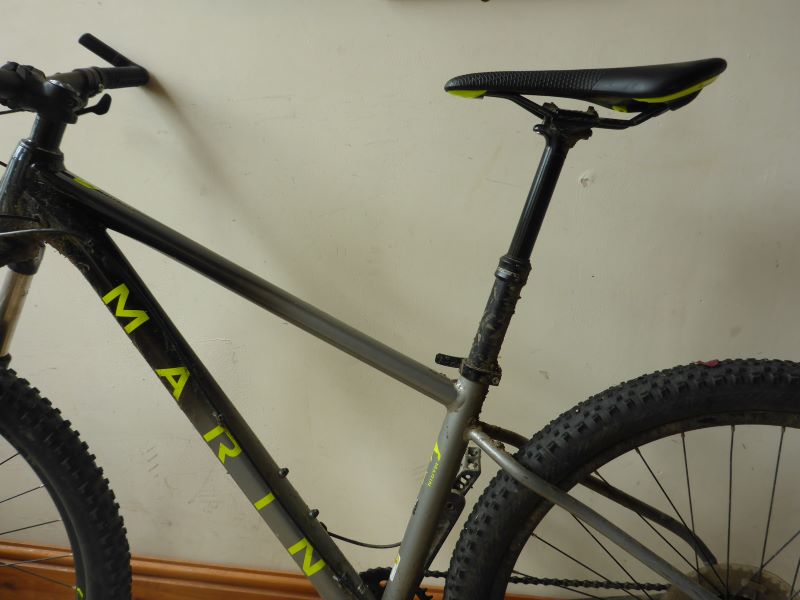
6/ Mountain bike dropper post
I first noticed these years ago and thought they were a total gimmick, not to mention being really expensive. I remained content to fall over the handlebars when going downhill too fast. But everyone on a mountain bike seems to have one these days so finally invested, and was instantly hooked. The basic principle is the same as for the classic ‘office chair’, when a lever is pressed your body weight on the chair lowers it down, and with the lever released the chair remains at that height. To bring the chair up the lever is pressed again and with body weight removed from the chair it rises. And so zooming along if a steep descent appears a quick press of the lever mounted next to the brake lever will drop the seat right down to ensure a far safer ride, and then can be instantly popped back up again when required. Also very useful to lower the seat when shoving the bike in the car, or when your daughter nicks your bike and wants it a different height. There are tons on the market, at hugely different prices. You tend to get what you pay for, though look out for length of travel and how the cable is routed – the more travel the better, and internal routing (if your bike can accommodate) is the way to go. Being relatively stingy I opted for a cheaper post, though still highly recommended, and have been 100% impressed so far (and I’m an engineer so it can’t be that bad). This was a Brand X Ascend
https://www.mbr.co.uk/reviews/seatposts/brand-x-ascend
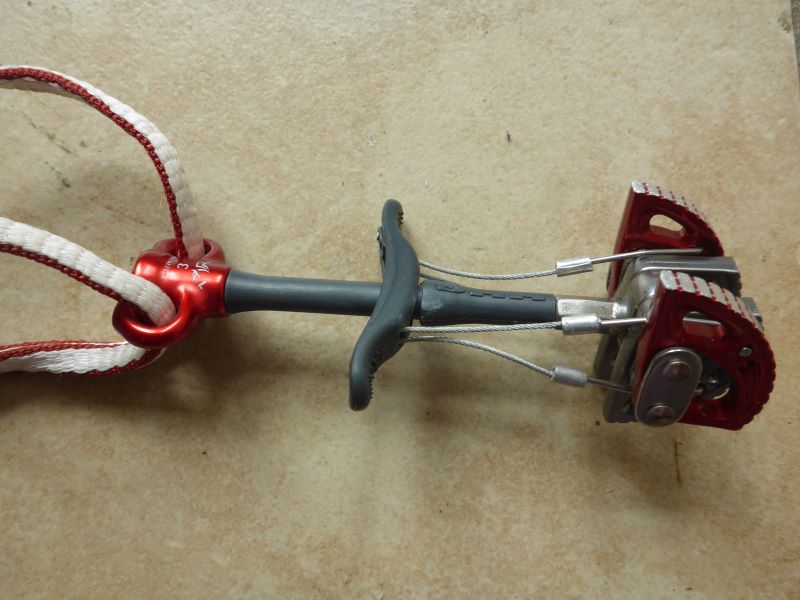
7/ DMM dragon cam
Swinging around above the sea on an abseil rope on what was to become ‘Muy Caliente’, Tim Emmets fantastic Pembroke E9, I struggled to seat a cam for the hard crux at the top. The cam went in but wasn’t good enough for me to be comfortable with. The lead was ‘off’. Admittedly my cam selection was pretty poor back then, but a few years later, armed with a few Dragon cams, the placement was a totally different proposition, the double-axle technology making the difference. The lead was ‘on’ and duly dispatched.
Camming devices have been around for ages now, and initially they revolutionised trad climbing. Since their release there have not really been any massive changes to the design, other than using double-axle as opposed to single. The overall principle remains roughly the same. However, comparing initial rigid stem cams to the latest offerings and they are a world apart! Dragon cams bring together all the relatively small advances in performance and weight saving to bring a piece of kit that is a true joy to use, not to mention that it looks amazing. The Rolls Royce of camming devices without the high price tag.
https://dmmclimbing.com/Products/Cams/Dragon-Cams
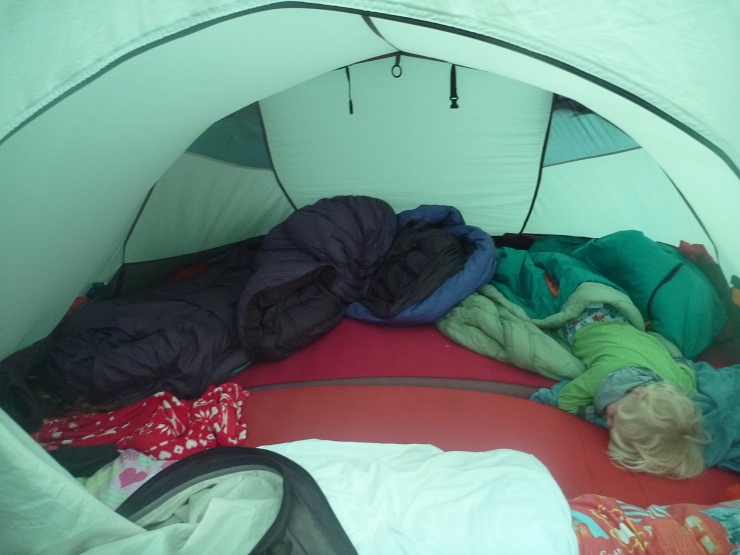
8/ Exped Megamat.
Maybe I’m old now, but it’s been a very long time since I was happy to sleep on a 6mm thick bit of foam. Thinking back to numerous camping trips laid out on stony floors I don’t know how I managed. I used to spend months in a row basically on a rock hard floor in The South of France and never noticed a problem…. Maybe my shoulders have never recovered! Now a crap night’s sleep spells the end of a fun day and totally rules out any kind of performance climbing.
When the first Thermarest was invented everyone cheered. This was a monumental improvement to comfort. But things have moved on again. The Exped Megamat has totally changed the game as far as camping comfort is concerned. The comfort is simply amazing, and I’m more than happy sleeping on it over a normal bed. The construction is a box style so it’s totally flat, and it’s foam filled so unlike the cheap air beds its nice and warm to sleep on even if the ground is freezing. True, it is hardly the lightest or has the smallest pack size. This is really a ‘car camping’ luxury. But in reality most camping is driven to anyway. The only problem is that now, if I don’t have a pad, I’m likely to get very grumpy indeed!
9/ Katadyn BeFree water filter
Game Changer! For most of us outdoor people we tend to already have most of our kit but get newer and better versions, and so we don’t really notice a huge change. But a water filter was not something I’ve owned before. I got one of these before a trip to Malaysia to avoid buying tons of bottled water, which proved its worth tenfold. But since then it’s really come into its own. Long days out in the hills, especially with youngsters (who won’t want to carry heavy water) are totally transformed. Provided you know you’ll be near some relatively clean water then minimal supplies need to be carried. Typically before I owned a filter I’d be setting off with at least 6kg of water, now I’ll just have a litre! And on long bike rides I’ll not even take any, just the filter. I’ve not had any experience of other brand filters but did my research on this one and it seems to tick all the boxes in terms of what it filters out, how durable it is, ease of use and how much it costs. I must have drank many hundreds of litres from the filter and not once did I get any illness. As I say, absolute game changer, and few bits of kit will really make this cut! This really is an essential bit of kit for any outdoor person.
It is worth doing a bit of research though. This Filter removes bacteria, cysts and sediment with its pore size of 0.1 micron (0.0001mm). The output is up to 2L/min. and the capacity up to 1000L, depending on the water quality, before a new filter is needed. Water filters generally only remove bacteria and protozoa. If you want to remove viruses, you will need a water purifier or a far smaller pore size. Virus protection is only really needed in under developed countries. Viruses are, most often, species-specific. That means, viruses that are harmful to humans are transferred primarily by the faecal matter of other humans (we are not really talking about Covid 19 here). Therefore, where fewer humans exist, we assume the risk of viruses is also lower. A filter is probably not ideal for use in the mucky beck in town, or the river at the bottom of Froggat, but fine for up in the hills in some hidden valley.
10/ Fatmap mapping for smart phone.
Just a few years back, and when I spotted someone in the hills navigating by phone I scoffed and figured they were towny types who would end up lost and tripping over their designer shoes. But maybe they were ahead of the curve. Now I’m often staring at my phone watching the red ‘you are here’ dot as I make my way back to the path I’d somehow lost. This app has been a total revelation in so many ways. Just a few of the features are mentioned below that really impressed me.
It’s global, with a mapped area of just about everywhere. So no matter where I end up, I can see where I am, and what is around me. This could be my parents house in England, a family holiday to Spain, or a climbing trip to Morocco. Personally, probably the most use has been the ability to plan easy or hard walks or bike rides or crag walk-ins without having to source maps which can be really tricky, or buy them, which ends up costing tons.
Its 3D, or 2D, whatever you want, and it’s incredibly easy to navigate and move the image around to view from any angle or orientation.
The detail is unbelievable. I’ve no idea how it works, but you can see every path, and even how it gains or loses height. You can see cliffs, rivers, hills, walls, boulders, anything really.
You can download a map and use it out of reception and also to save data (download on wifi). GPS works out of reception. Your position is marked by a dot as is the way these days, but if you have lost the path, then this will get you sorted, or perhaps stop you falling over an edge in a white out.
Fatmap is free, though a subscription is needed for downloading maps. This isn’t much really for a year, the cost of a few paper maps, and personally I’d say, is absolutely worth it.
This bit of tech has become absolutely indispensable which is saying something for a technophobe. It has been the source of literally hundreds of quality days out. The only thing to consider is making sure you don’t run out of phone charge!
